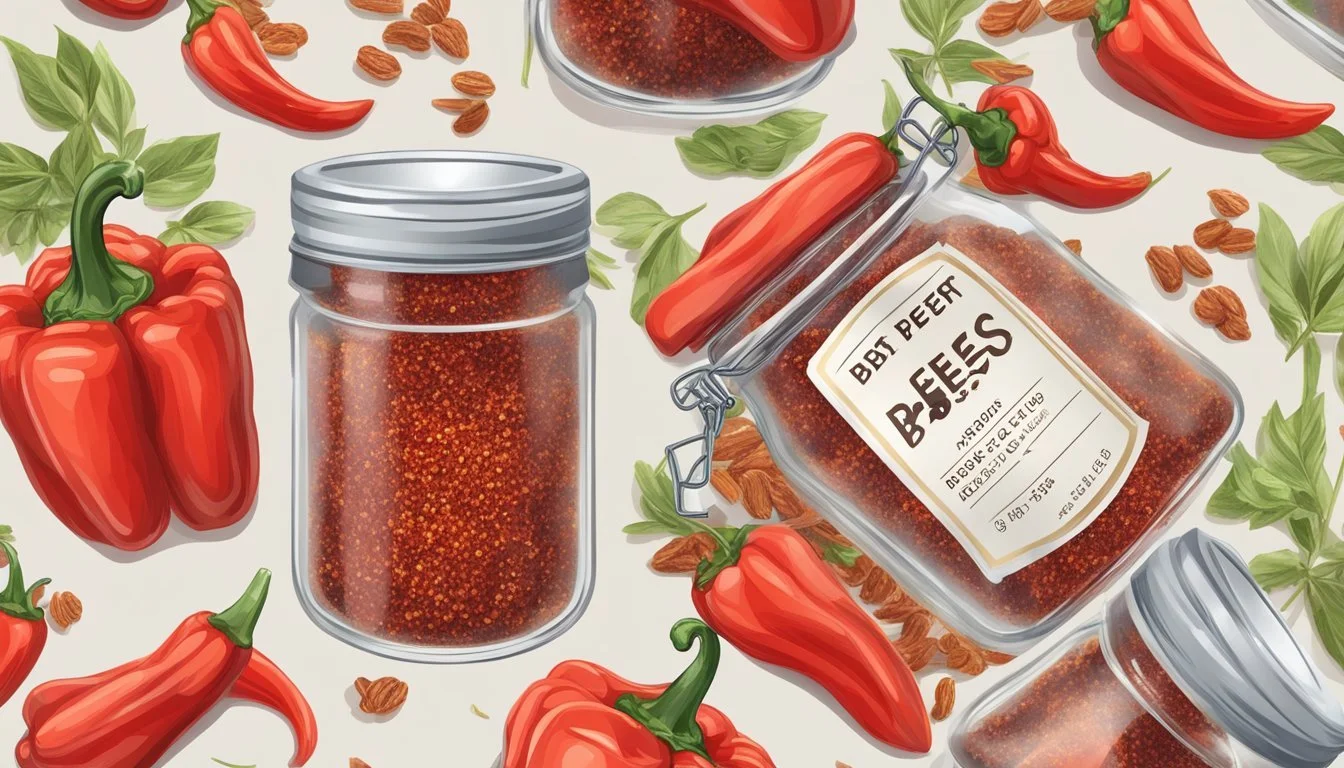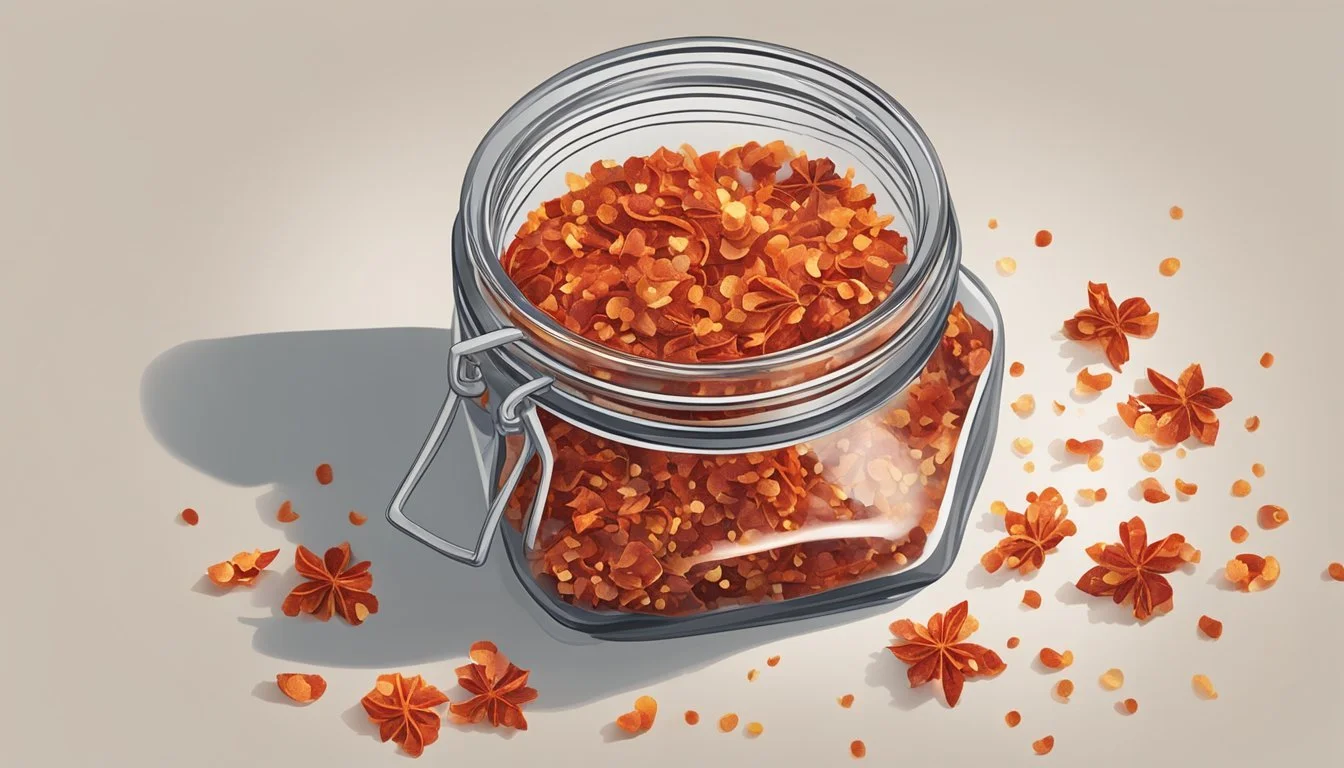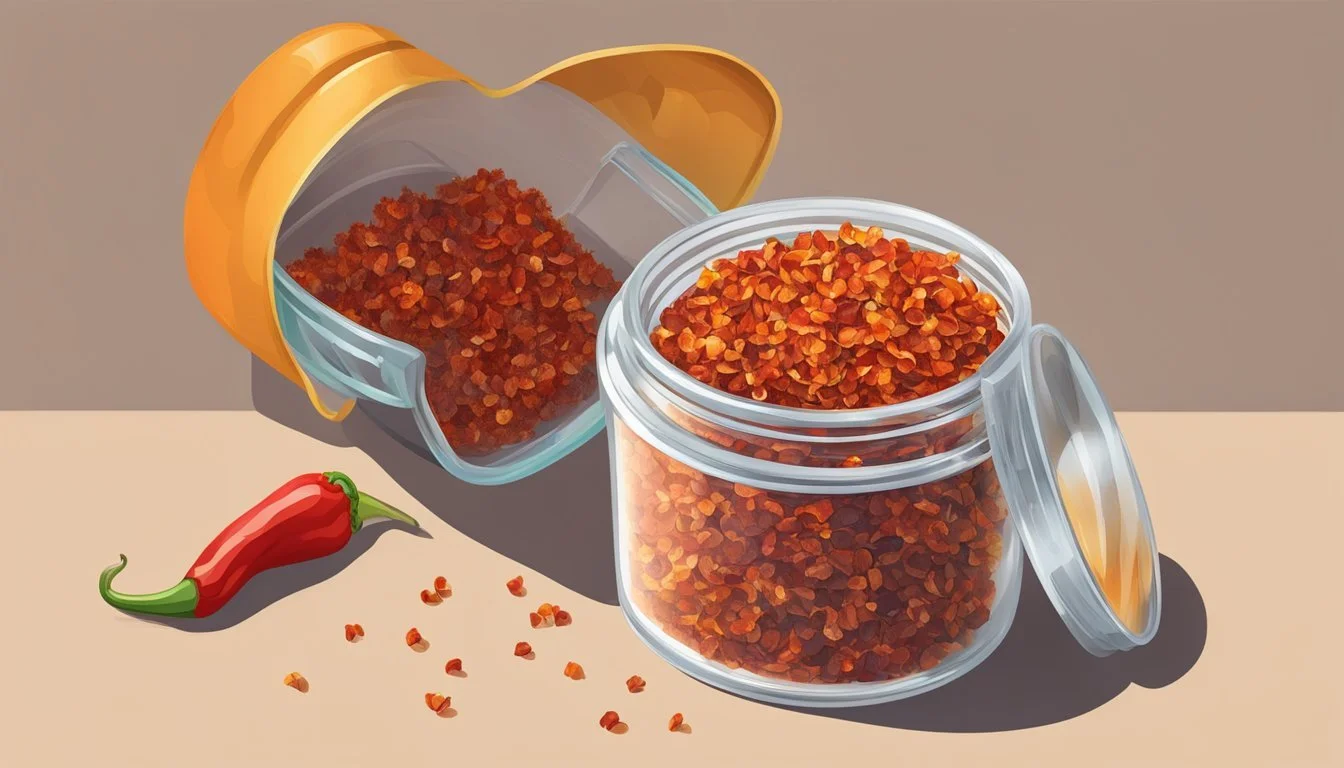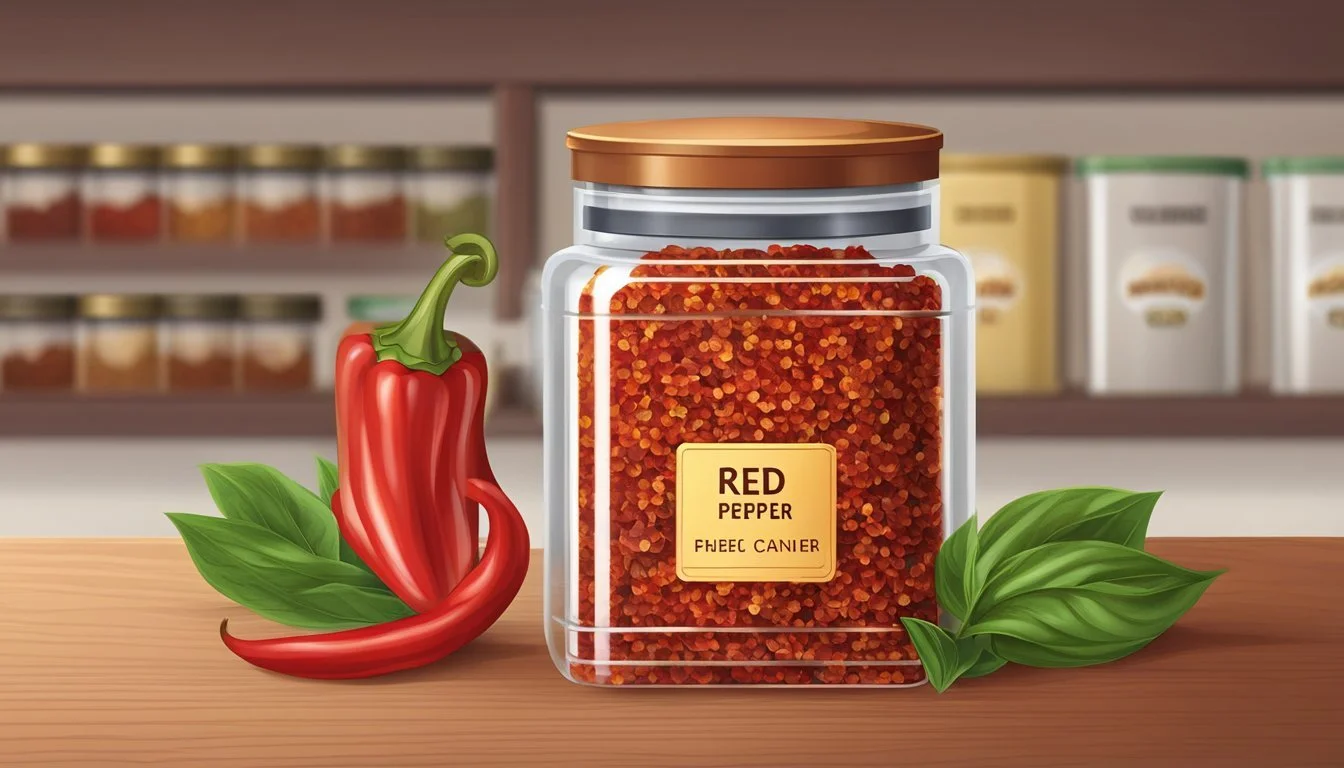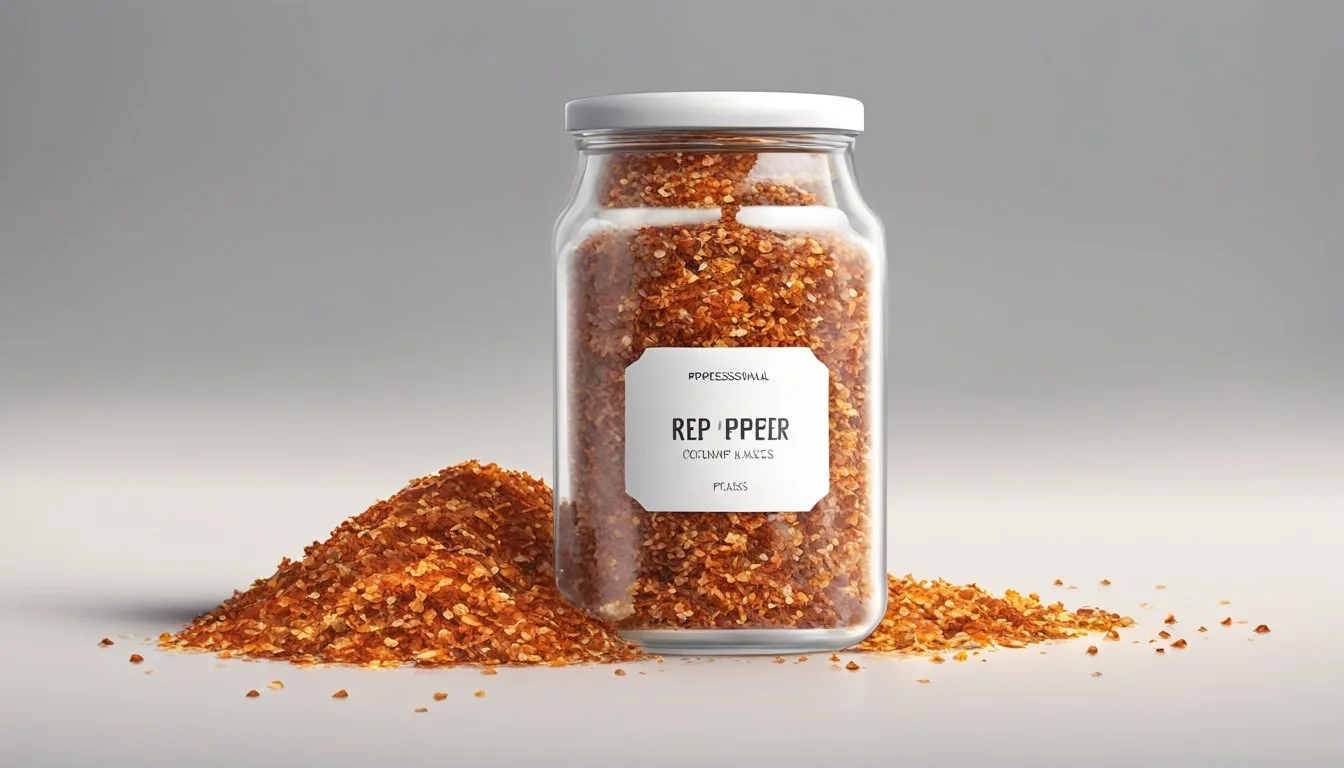Does Red Pepper Flakes Go Bad?
Shelf Life and Storage Tips
When it comes to the longevity of red pepper flakes, a common question is whether they go bad. Stored properly, red pepper flakes can last from one to three years without losing much flavor. The way they are dried and packaged plays a crucial role in their longevity, alongside factors such as exposure to moisture and air.
Red pepper flakes are known for their vibrant color and ability to add both visual appeal and spiciness to dishes. The intensity of the spiciness can vary, but generally, this spice retains its heat for a considerable period if kept in a cool, dry place. Over time, however, improperly stored flakes can lose both flavor and potency.
It's important to assess the condition of your red pepper flakes before using them. Check for any signs of mold or significant discoloration; if they look dull or smell off, they might not provide the desired heat. Proper storage in airtight containers can significantly extend their shelf life, ensuring that dishes remain flavorful and appealing.
Understanding Red Pepper Flakes
Red pepper flakes are a versatile spice made from dried and crushed red chili peppers, typically used to add heat to a variety of dishes. Their origins, culinary applications, and health benefits make them a staple in many kitchens.
Origins and Varieties
Red pepper flakes are derived from a variety of red chili peppers, often including cayenne, bell, and other hot peppers.
Cayenne pepper is the most common variety used, lending a consistent heat level and flavor.
Crushed red pepper typically contains not just the flesh, but also the seeds, which contribute to its distinctive spiciness.
This spice was first popularized in regions such as South America and Asia, where chili peppers are widely cultivated.
Today, red pepper flakes are produced globally, reflecting the widespread popularity of spicy flavors.
Culinary Uses
Red pepper flakes are known for their versatile usage in cooking. They are often sprinkled on pizza, pasta, and various Italian dishes.
In addition, they enhance the flavor of soups, stews, and sauces.
A common use is as a topping for dishes to add an instant kick of heat.
Chefs also use them in marinades and dry rubs to infuse meat and vegetables with a spicy note.
One notable attribute is their ability to blend well with various cuisines, from Italian to Mexican to Asian dishes.
Nutritional Profile and Health Benefits
Red pepper flakes offer several nutritional and health benefits. They are a rich source of vitamins A, C, and E, which are essential for various bodily functions.
These flakes contain capsaicin, a compound known for its anti-inflammatory properties and ability to boost metabolism.
The consumption of red pepper flakes can aid in pain relief and potentially improve digestion.
Moreover, they contain small amounts of minerals such as potassium and manganese.
The antioxidants present help protect against cellular damage, making red pepper flakes a beneficial addition to the diet.
Factors Affecting Freshness and Potency
Proper storage plays a crucial role in maintaining the freshness and potency of red pepper flakes. Various elements can either preserve or degrade their quality, aroma, and spiciness over time.
Exposure to Elements
Red pepper flakes can lose potency and freshness due to exposure to heat, light, air, and moisture. Heat can accelerate the degradation process, causing the flakes to lose their pungency and flavor potency. Therefore, they should be stored in a cool environment.
Light, particularly direct sunlight, can cause the color to fade and the aroma to diminish. Air exposure can oxidize the spice, leading to a stale flavor and weakened spiciness. Moisture is another critical factor; it can lead to mold growth and spoilage, necessitating storage in airtight containers.
Time and Potency Correlation
Over time, red pepper flakes naturally lose their potency. Within 1 to 3 years, the quality typically declines, influenced by how well they are stored. The flakes' color, aroma, and spiciness will gradually diminish.
Freshness is most preserved when kept in optimal conditions, such as a cool, dark place away from moisture and air. This storage approach helps maintain their aromatic and flavor qualities, keeping them vibrant and potent for longer periods. Proper packaging and initial quality also significantly impact the longevity and effectiveness of the spice.
Proper Storage Solutions
Maintaining the piquancy and aromatic qualities of red pepper flakes depends significantly on how they are stored. The following subsections will explore container choices, storage locations, and best practices to extend shelf life.
Best Containers for Preservation
Choosing the right container plays a crucial role in preserving the flavor and potency of red pepper flakes. Airtight containers are essential. They prevent moisture from seeping in, which can lead to mold and spoilage.
Glass containers are often preferred due to their non-reactive nature and ability to keep out air and moisture. Plastic containers are also an option, but make sure they are of food-grade quality and tightly sealed to ensure optimal protection. Mason jars with sealing lids are an excellent choice too.
Pantry vs. Refrigeration vs. Freezing
When deciding where to store red pepper flakes, consider the environmental conditions. A cool, dark pantry or cupboard away from direct sunlight is ideal for daily use.
Refrigeration is an option, especially in humid climates, but it introduces moisture when opened frequently. For those with bulk quantities, freezing is suitable. Freeze red pepper flakes in airtight containers to maintain freshness without ice buildup. This method prolongs shelf life extensively.
Tips for Ensuring Longevity
To maximize the longevity of red pepper flakes, follow these tips:
Store in a cool, dark place to minimize exposure to light and heat.
Use airtight containers to prevent moisture and contamination.
Label containers with purchase dates to track freshness.
Avoid opening the storage container frequently to reduce exposure to air.
By adhering to these guidelines, red pepper flakes can retain their flavor and potency for extended periods, ensuring they remain a vibrant addition to culinary dishes.
Identifying Spoilage and Quality Deterioration
Identifying spoilage and quality deterioration in red pepper flakes involves observing both visible changes and alterations in scent. Consuming expired spices can pose risks, impacting both health and culinary experiences.
Visual and Olfactory Indicators
The first sign of spoilage in red pepper flakes is changes in color. Fresh flakes typically appear bright red, while older or spoiled ones may turn dull or brownish. Mold growth is another visual cue; any sign of mold indicates that the pepper flakes should not be consumed.
An inspection should also include aroma. Fresh red pepper flakes have a pungent, spicy scent due to the dried chili peppers and their compounds. If the smell is faint or off, this indicates a loss of quality and flavor profile. This is often due to exposure to moisture, leading to oxidative stress and deterioration of the spice's antioxidant properties.
Risks of Consuming Expired Spices
Using expired red pepper flakes can introduce bacteria into food, potentially causing illness. While a loss of flavor is likely the most immediate concern—diminishing the dish’s taste—there are other risks. Mold and bacteria flourish in environments where the flakes have absorbed moisture, compromising the shelf life and posing health hazards.
Expired spices might not provide the same antioxidant benefits, which could lessen their contribution to tackling oxidative stress and preventing disease. Properly stored red pepper flakes are essential for maintaining their aroma, color, and flavor, ensuring both safety and taste in culinary endeavors.
Enhancing Dishes with Red Pepper Flakes
Red pepper flakes are a versatile ingredient that can add depth and piquancy to various dishes. They can balance flavors and heat or you can use them creatively in culinary applications to transform simple recipes into memorable meals.
Balancing Flavors and Heat
One key aspect of using red pepper flakes is their ability to balance flavors and heat. A touch of red pepper flakes can elevate a savory dish by adding just the right amount of spicy kick. When preparing bean and lentil dishes, start by sautéing onions and garlic, then add the legumes and vegetable broth. Sprinkle in red pepper flakes to provide a balanced heat as the mixture simmers.
In pasta sauces, red pepper flakes offer a subtle but impactful spiciness that complements ingredients like oregano and bell pepper. Just a pinch can make a significant difference. Pizza toppings also benefit greatly; a dash of flakes enhances the flavor without overpowering other ingredients.
Creative Culinary Applications
Apart from balancing flavors and heat, there are creative applications for red pepper flakes in the kitchen. Infused oils are a fantastic example. To create an infused oil, mix a cup of preferred oil with a tablespoon of red pepper flakes in a sterilized jar, then let it rest in a dark place for 1-2 weeks. This oil can be used in salad dressings or as a finishing touch for dishes needing a bit of heat.
Additionally, red pepper flakes can substitute for more specific spices. Substitute 1:1 with chipotle powder for a smoky flavor or use finely chopped fresh jalapeños instead. In salad dressings and marinades, red pepper flakes can add zest and piquancy, making the flavors pop.
Incorporating red pepper flakes into your culinary repertoire ensures that dishes not only have a vibrant heat but also a well-rounded and complex flavor profile.
Alternatives and Substitutes
For those who don't have red pepper flakes on hand or are looking for alternatives, several options are just as effective in bringing heat and flavor to dishes. These substitutes include both common pantry items and more specialized ingredients.
Common Substitutes for Red Pepper Flakes
Cayenne Pepper: A frequently used substitute, cayenne pepper is one of the primary components of red pepper flakes. Use 1/2 teaspoon of cayenne powder to replace 1 teaspoon of red pepper flakes to achieve a similar heat level.
Chili Powder: Chili powder offers a blend of spices, making it an excellent choice for a more complex flavor. Although less spicy than red pepper flakes, it works well in Mexican and other spicy dishes. Adjust the amount based on your heat preference.
Hot Sauce: For wet dishes, hot sauces like Tabasco or Sriracha can be an effective replacement. A generous dash can substitute for 1 teaspoon of red pepper flakes, allowing for easy adjustment to taste.
Black Pepper: While milder than red pepper flakes, black pepper can provide a subtle kick for those who don't desire much heat. Use it sparingly as a milder alternative, understanding it offers a different flavor profile.
Making Homemade Chili Flakes
Selecting Peppers: For homemade chili flakes, start with drying red chili peppers like ancho or hot varieties like cayenne. Drying the peppers preserves their flavor and extends their shelf life.
Drying Process: Dry the peppers using a dehydrator or by air-drying in a well-ventilated area. This reduces moisture content, making them easier to grind.
Grinding: Once dried, grind the peppers in a spice grinder or mortar and pestle to achieve the desired flake size. Store the homemade chili flakes in an airtight container to maintain freshness.
Customization: Customize your flakes by adding dried herbs such as nutmeg or cloves for unique flavor profiles. This can create a personalized blend that surpasses store-bought options in taste and freshness.

